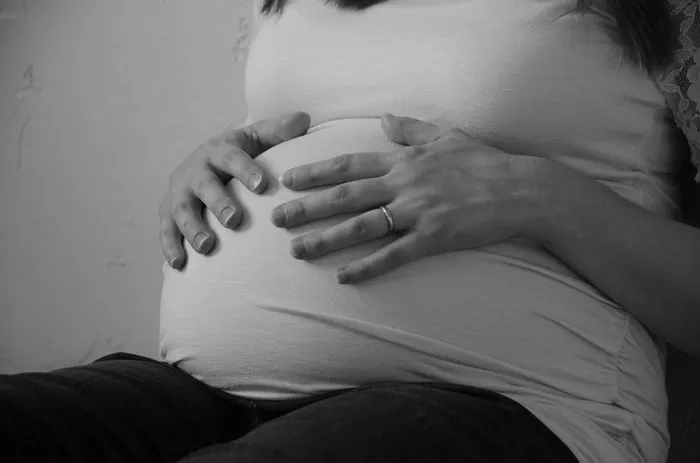Pregnancy at the age of 45 is a topic that has gained increasing attention in recent years. While it is possible for a woman to conceive at this age, it comes with a host of unique considerations and challenges. As women age, their reproductive systems undergo significant changes that can affect fertility and the course of pregnancy. Understanding these aspects is crucial for women who may be contemplating pregnancy at 45 or for those who want to be informed about the possibilities and risks involved.
The Decline in Fertility with Age
Ovarian Reserve: One of the main factors contributing to the decrease in fertility as women reach 45 is the reduction in ovarian reserve. The ovaries contain a finite number of eggs, and over time, this number diminishes. By the age of 45, the quantity and quality of eggs are significantly lower compared to a woman in her twenties or thirties. For example, a younger woman may have hundreds of thousands of eggs, while a 45-year-old may have only a few thousand remaining, and many of these may have chromosomal abnormalities.
Hormonal Changes: There are also hormonal changes that occur. The levels of estrogen and progesterone, which are essential for maintaining a healthy menstrual cycle and supporting pregnancy, may become irregular. The pituitary gland, which controls the release of hormones that stimulate the ovaries, may not function as efficiently. This can lead to irregular ovulation or even the complete cessation of ovulation, making it more difficult to conceive.
The Chances of Natural Conception
Low Probability: The chances of natural conception at 45 are relatively low. Studies have shown that the monthly probability of a 45-year-old woman getting pregnant without medical intervention is around 1% to 3%. This is in contrast to a woman in her twenties, who may have a 20% to 25% chance each month. The decline in fertility is due to the combination of factors mentioned earlier, such as the poor quality of eggs and the irregularity of ovulation.
Impact of Lifestyle: However, lifestyle factors can also play a role. Women who maintain a healthy weight, exercise regularly, and have a balanced diet may have slightly better odds. For instance, obesity can disrupt hormonal balance and further reduce fertility, while regular physical activity can help regulate hormones and improve overall health. Smoking and excessive alcohol consumption are also known to have a negative impact on fertility and should be avoided.
Medical Options for Conception
In Vitro Fertilization (IVF): IVF is one of the more common medical options for women aged 45. In this procedure, eggs are retrieved from the ovaries and fertilized with sperm in a laboratory. The resulting embryos are then transferred back into the uterus. However, the success rates for IVF at 45 are still relatively low. The average success rate per cycle may range from 5% to 10%. This is due to the high likelihood of chromosomal abnormalities in the eggs, which can lead to failed implantation or early miscarriage.
Donor Eggs: Another option is the use of donor eggs. If a woman’s own eggs are of poor quality or if she has exhausted her ovarian reserve, using eggs from a younger, healthy donor can increase the chances of pregnancy. The success rates with donor eggs are significantly higher, often comparable to those of a younger woman using her own eggs. However, this option involves ethical and emotional considerations, as the resulting child will not be genetically related to the mother in terms of the maternal egg contribution.
Risks Associated with Pregnancy at 45
Miscarriage: The risk of miscarriage is much higher at 45. Approximately 50% to 60% of pregnancies in women of this age may end in miscarriage. This is mainly because of the chromosomal abnormalities in the embryos. The older the eggs, the more likely it is that the embryo will have an incorrect number of chromosomes, which can lead to the pregnancy not progressing.
Pregnancy Complications: There is also an increased risk of pregnancy complications. Gestational diabetes, preeclampsia (high blood pressure during pregnancy), and placental problems are more common. For example, preeclampsia can lead to serious health issues for both the mother and the fetus, such as organ damage and restricted fetal growth. The placenta may not function optimally, which can affect the supply of nutrients and oxygen to the fetus.
Fetal Abnormalities: The likelihood of the fetus having genetic or chromosomal abnormalities is also elevated. Conditions such as Down syndrome and other trisomies are more frequently seen. Advanced maternal age is a significant risk factor for these disorders, and prenatal screening and diagnostic tests are essential to detect any potential issues.
The Importance of Prenatal Care
Early Detection: Prenatal care is of utmost importance for women who become pregnant at 45. Early detection of any potential problems can help in making informed decisions and implementing appropriate management strategies. Routine ultrasounds, blood tests, and genetic screening should be carried out. For example, a first-trimester screening can assess the risk of chromosomal abnormalities, and a detailed ultrasound in the second trimester can detect structural defects in the fetus.
Monitoring and Management: Regular monitoring of the mother’s health, including blood pressure, blood sugar levels, and weight gain, is necessary. If any complications such as gestational diabetes or preeclampsia are detected, proper management can be initiated. This may involve dietary changes, medication, or more frequent medical visits to ensure the well-being of both the mother and the fetus.
Emotional and Social Considerations
Personal Stress: Pregnancy at 45 can bring significant personal stress. Women may worry about their own health, the health of the baby, and their ability to cope with the demands of pregnancy and motherhood. The fear of miscarriage or having a child with a disability can be overwhelming. Additionally, they may face judgment or comments from others, which can add to the emotional burden.
Family and Social Support: Family and social support play a crucial role. Partners, children (if any), and close relatives can provide much-needed emotional and practical support. A strong support network can help the woman manage the stress and challenges of pregnancy. It is also important to consider the impact on existing family dynamics, especially if there are older children who may have different reactions to the new addition.
Conclusion
In conclusion, while it is possible for a woman to get pregnant at the age of 45, it is a complex and challenging situation. The decline in fertility, low chances of natural conception, and increased risks of miscarriage, pregnancy complications, and fetal abnormalities all need to be carefully considered. Medical options such as IVF and donor eggs are available but have their own limitations and considerations. Prenatal care is essential to monitor and manage any potential issues. Moreover, the emotional and social aspects cannot be overlooked. Women and their partners should have in-depth discussions with healthcare providers and consider all factors before making a decision about pregnancy at 45. It is a decision that requires careful thought, planning, and a comprehensive understanding of the physical, emotional, and social implications.
Related topic


























